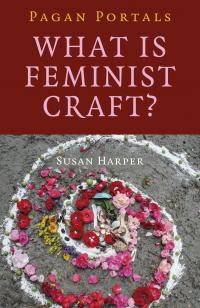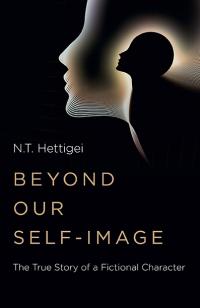
 ‘The important position ascribed to goddesses in the Elder Faith is very noticeable, and was doubtless owing, at least in part, to the associations of maternity and the train of thought following therefrom’, wrote William Wood-Martin.
‘The important position ascribed to goddesses in the Elder Faith is very noticeable, and was doubtless owing, at least in part, to the associations of maternity and the train of thought following therefrom’, wrote William Wood-Martin.
‘Gods and goddesses were regarded as semi-spiritual beings, and as the origin, as well as the guardians or rulers of the tribe. At this stage the god or goddess and the worshippers formed a natural unity bound up with the district they occupied. The dissolution of the tribe destroyed the tribal religion, and destroyed the tribal deity; the god or goddess could no more exist without its tribe than the tribe without its deity. Nevertheless, Elder Faith deities were not inanimate, obscure imports and there is little doubt but that many of them, under ancient Gaulish names, may be recognized in the old legends. Many of the old Celtic gods-goddesses of Gaul, of Britain, and of Ireland appear to have been the nature-gods of the primitive Aryan family although of differing British and Gaulish prototypes.’ [Traces of the Elder Faiths of Ireland, vol 2]
‘Many singular customs of the peasantry are but faint reflected lights of the old past, for, although the Christian missionaries did their utmost, according to their light, to stamp out paganism, there remained in the hearts of the people a deeply rooted fondness for the form of worship in which they had been brought up. It was the religion of their forefathers and despite the popular ideas of the rapid conversion of the islands to Christianity, yet in almost every district there must have remained some few who clung with tenacity to the old tenets, and handed them down from generation to generation in a more or less mutilated form. To the present day very distinct traces of paganism may be found in the practices attributed to wise women and witches. In these superstitions and observations of the peasantry are enshrined strange fragmentary relics of earlier creeds but their remote antiquity and now but half decipherable implications are, in general, passed unnoticed. [Traces of the Elder Faiths of Ireland, vol 1]
At the festival of old Imbolc – transposed into the Church calendar as Candlemas - a Christian holiday celebrating three occasions - the presentation of the child Jesus; Jesus’ first entry into the temple; and the Virgin Mary’s purification (mainly in Catholic churches). At Candlemas, many Christians (especially Anglicans, Methodists, Lutherans, Orthodox and Roman Catholics) also brought their candles to their local church, where they were blessed and then used for the rest of the year.
All this Christian overlay merely confirms what an important festival this was for our pagan forebears and, as such it became the feast of the Purification of the Virgin Mary in the church calendar. The Christian feast-day commemorates the ceremony performed by the mother of Jesus in the temple of Jerusalem forty days after the birth of Christ in fulfillment of the Mosaic Law requiring the cleansing of a woman from the ritual impurity incurred at childbirth. The convenience of having yet another pagan festival falling within the ‘nativity cycle’ meant that Brigid became a Catholic saint and her feast-day incorporated into the Church calendar! In the early calendar, on that morning, many candles were lit in the churches, symbolically driving out the darkness. In the afternoon, there was feasting all around, with much music as Candlemas Day (2nd February) marked the formal end of winter.
In the pagan Celtic world it was Imbolc, the festival marking the beginning of spring that has been celebrated since ancient times. It is also a cross quarter day, midpoint between the Winter Solstice and the Spring Equinox, and the name derives from the Old Irish imbolg meaning ‘in the belly’, a time when sheep began to lactate, their udders filled and the grass began to grow. Imbolc was a time to celebrate the Celtic goddess Brigid, goddess of inspiration, healing, and smithcraft, with associations to fire, the hearth and poetry. Also called Là Fhèill Brìghde, it corresponds to the Welsh Gŵyl Fair y Canhwyllau as a traditional festival marking the beginning of spring; it was widely observed throughout Ireland, Scotland and the Isle of Man and, for Christians, especially in Ireland, it became the feast day of Saint Brigid. Local festivals marking the arrival of the first signs of spring may be named after either the Cailleach or Brìghde, while some interpretations have them as two faces of the same goddess.
Là Fhèill Brìghde, is also the day the Cailleach gathers her firewood for the rest of the winter. Legend has it that, if she intends to make the winter last a good while longer, she will make sure the weather on 1st February is bright and sunny, so she can gather plenty of firewood to keep herself warm in the coming months. As a result, people are generally relieved if Là Fhèill Brìghde is a day of foul weather, as it means the Cailleach is still asleep, will soon run out of firewood, and therefore winter is almost over. The Cailleach is a divine hag, a creatorix, weather and ancestor deity while Brigid is a sort of Celtic Athena, with very similar functions. Although most often presented as a mysteriously veiled, ancient woman, the Cailleach is also said to take on the guise of many different beasts and birds as she travels around the rugged landscapes of her homeland. The Cailleach Béara is said to be one of the most ancient of mythological beings, appearing as an old crone who brings winter with her when she appears and who wields incredible power over life and death.Her ability to control the weather and the seasons meant many communities looked on the Cailleach with a mixture of reverence and fear.
From Candlemas, the Earth and Coven practice is given over to the Old Lass – when all things in Nature are seeding and growing. It is the time when the Old Lad is resting and when we might hear those Pan-pipings, or the sound of the lyre-strings rippling through the reeds and grasses. It was said that if you fell asleep beneath a willow tree, the sound of the wind in its leaves could inspire, and that ‘wind in the willows’ referred to the elves whispering among themselves in willows as humans walked underneath. The Old Lass oversees her world until Lammas when the dark tide begins to turn and the Old Lad prepares to take centre stage again - and the Coven rituals begin to reflect his presence.
Because humankind has always had a tendency to see images of its gods in his own likeness, we have come to see pagan deities very much cast in 20th century form. Ironically in giving ‘goddess-energy’ the cartoon image of a warrior-princess or a member of the pre-Raphaelite sisterhood, the true mystery of ancient witchcraft has been lost in favor of fantasy creations. Just as Christianity pinched the Egyptian Isis-Horus concept and promoted the Madonna and Child as a popular image, so modern paganism often adopts a similar approach to the Mother-Goddess in order to give this new religion ‘people appeal’.
For the purposes of Old Craft techniques, however, it is important to accept the energies associated with these archaic male-female aspects of magic and not transpose the concept of the loving, caring Great-Mother-Goddess of Wicca-Christianity into Old Craft working. The female-goddess energy within Nature is just as ‘red in tooth and claw’ as male-god energy; both are equally as merciless as the other. It is also important to understand that this energy (whether male or female) is neither malevolent nor benevolent, it is merely ‘there’ waiting to be harnessed for use in magic rites. It also means that any goddess-invocation can be fraught with danger and uncertainty.
Although not a religion, this is a belief – a belief in one’s own abilities and in the ‘Power’ that fuels the universe; and a faith – faith in one’s self and in that ‘Power’. This is not generally seen as gender specific but in truth, the Elder Faith does lean towards the male aspect since the female remains veiled and a mystery. In other words, the ‘God’ is the public face of traditional British Old Craft while the ‘Goddess’ remains in the shadows, revered and shielded by her protector. Not because she is some shy and defenseless creature, but because face to face she would be too terrible to look upon! Or as the scientist who discovered the deadly Marburg filovirus observed when he saw the virus particles: ‘They were white cobras tangled among themselves, like the hair of Medusa. They were the face of Nature herself, the obscene goddess revealed naked … breathtakingly beautiful.’ The secrets of the Elder Faith come from the understanding of these things …
We also accept that the physical worldly embodiment of the goddess - Mother Nature - is neither caring nor motherly and when she wants to cut up rough – she will, without a thought for anything, or anyone. In the guise of ‘The Goddess’ she is usually seen as spending her days caring for her many children who inhabit and shape the landscape – often portrayed in trailing garments composed of lush plants, colourful flowers, and sinuous woody shapes. In most depictions she is meditative, embodying the spirit of the mythological ‘mother’ in Nature. Firmly entering the zeitgeist as a figure akin to that aforementioned synergetic composite of Burne-Jones in the later stages of the Pre-Raphaelite movement, Guinevere of Arthurian romance, and Daenerys Stormborn from Game of Thrones – reflecting the general intellectual, moral, and cultural climate of the era.
Over previous decades, however, the archaeo-mythological work of Professor Marija Gimbutas was revealing a far more primal approach to discovering the persona of this ‘hidden’ goddess of Old Europe. Not unexpectedly, her theories have been dismissed by many of her fellow archaeologists but like Carl Jung and Margaret Murray, whose work has also suffered similar professional scorn, there are elements that ‘speak’ to authentic witches on a more subliminal level. As writer Allen Bennett once observed it’s that moment in reading when you come across something … ‘a thought, a feeling, a way of looking at things – which you thought special and particular to you. Now here it is, set down by someone else, a person you have never met, someone even who is long dead. And it is as if a hand has come out and taken yours.’ It was as if, on discovering the writings of Marija Gimbutas, the tectonic plates of archaeo-mythologica (Old Europe) and esoteria (Old Craft) collided – and made complete sense of the way we viewed this ‘hidden’ Primal Goddess within our own Tradition.
We also found ourselves asking, but where exactly was this ‘Old European’ culture located? Between c7000 and c3500BC the inhabitants of this region developed a much more complex social organisation than their western and northern neighbours. In the Goddesses & Gods of Old Europe, this area is designated as extending from the Aegean and Adriatic, including the islands of Sicily and Crete, as far north as Czechoslovakia, southern Poland, the western Ukraine and parts of Anatolia. Suggesting that the earliest possible representations were those prehistoric ‘Venus’ figurines found from across Western Europe to Siberia – all sharing the same characteristics of pendulous breasts, sagging stomachs and huge buttocks; but more importantly the heads are small and featureless, i.e., without identity.
Some of the earliest mythical stories pay tribute to an ancient Mother-Goddess whose fertility and abundance give nourishment to a culture. Whether a life-giving goddess like Mesopotamian Ishtar, or a physically ample prehistoric female Venus of Willendorf, these sacred women were recognized for their powers of creation and survival. Portrayals of these goddesses typically show them as well-endowed, rotund, healthy, with an emphasis on their gender traits.
Venus of Willendorf – She symbolizes the nurturing and support that mother-hood creates. She is fat, showing her abundant life-energy. This sculpture of a so-called Venus – because of her exaggerated breasts and hips – was probably used as a fertility fetish. Fertility and hunting were essential components of survival during the nomadic, Paleolithic era … and she’s become quite an icon in modern age – even being recreated in colossal scale out of metal for a shopping Mall in Latvia!
Venus of Lespugue is a famous prehistoric female nude found near Lespugue which also shows an exaggerated female body. Made from reindeer horn, the form is different from the Willendorf example as it is more abstracted as a series of rounded balloon or grape type forms. Both though emphasis her female shape and de-emphasize her arms as they rest as thin shapes across her breasts.
In reality, almost all Neolithic goddesses are composite images with an accumulation of traits from the pre-agricultural and agrarian eras. Those ‘buxom wenches’ with their massive thighs, breasts and buttocks that suggest a prehistoric society weaned on junk food, or suffering from a thyroid dysfunction were only one aspect of the goddess. In other sculptures of the time we see lithe, elegant figures of the Cycladic and Stargazer imagery, and the mysterious female hands of the Paleothithic cave paintings.
Here we have multiple engraved and painted images of female sexual organs, animals and geometric figures discovered in southern France that are believed to be the first known wall art, created some 37,000 years ago. Since this site, Abri Castanet in southern France, is very close to Chauvet, it is likely that the artists in both cases came from what is known as the Aurignacian culture, which existed until about 28,000 years ago. Additional Aurignacian artwork, however, clearly represents female sexual organs. The Venus of Hohle Fels, for example, is an ivory figurine dating to at least 35,000 to 40,000 years ago, according to Nicholas Conard, a paleoanthropologist at the University of Tubingen who reported the find. The figurine, found in a southwestern cave in Germany, depicts a woman with what Conard described as ‘large projecting breasts’ and a pronounced vulva and labia majora visible between the woman’s open legs.
Another surprising revelation is that much of the cave art dating back to the Paleolithic indicates much of it was done by women, not men as is commonly believed. Anthropologist, Dean Snow has been studying ancient handprints in caves at the behest of National Geographic for nearly a decade. It began, he says, after reading about work done by geologist John Manning – he’d found that average finger lengths in people vary by gender. Men tend to have longer ring fingers than index fingers for example, while the opposite is true for women. Some time later, he reports, he was looking at pictures of cave art and noticed that the fingers on the hands appeared to conform to Manning’s description of female hands. That set him off on a voyage of discovery.
He began looking at cave art in a new way, and noted that differences between gender finger length in Paleolithic people was more pronounced than it is in modern humans who have more overlap. The cave art under review is early examples of hand stencils, where the person making them placed their hand against a wall then blew paint at it (through a straw or directly from their mouth) to create an outline. Up until recently most scientists have assumed cave art was most likely done by men - the depictions of women and animals being hunted seemed to sum up the life of hunters, the male half of a hunter-gatherer society. That idea has slowly been changing as archeologists have begun to take a closer look. Biologist Dale Guthrie, for example, conducted a study of the hand art and concluded that they were most likely made by adolescent boys. Snow theorized that if women were doing most of the cave art, it was possible they played a larger, more important role in how hunter-gatherer societies functioned than has been thought.
It is obvious from earliest times that lots of things were changing when it came to shaping the forms of history. Images of the Nile Goddess are from the earliest period in Egyptian history before the time of the Pharaohs, called the Predynasitc Period (c.3500-3400 BC). This Egyptian fertility goddess raises her arms upward gesturing to the sky as perhaps part of a ritual. She has a bird-shaped face, narrow waist, small breasts, and elongated arms with rounded hand ends. Originating in a different country than the other European fertility goddesses, this Egyptian statue displays a dramatically different female body. She has a spherical shape from her hips down without definitive legs or feet. Her breasts are more size appropriate for her figure. Yet, her face is not human, nor are her arms, more closely aligning her with the spirit and powers of a bird.
During the period between 3200 and 2000 BC, the small Cycladic islands in the Aegean became home to a flourishing pre-Greek culture, with the most prominent craft being stone-cutting, especially marble sculpture. The abundance of high quality, white marble on the islands, encouraged its wide use for the creation of a wide range of artifacts. Among these, Cycladic statues were the most distinctive because of the great numbers in which they are found, and the significance they held for their owners. The majority of Cycladic figurines show women, nude with the arms folded over the belly and the long feet, soles slopping downwards. We do not know whether they were meant to show mortals or deities, but in the absence of any other suggestion, probably symbolized the worship of the ‘Mother Goddess’. In this case, the statues may have been conceived as representations of the Goddess, or companions to her.
And, more than 5,000 years ago, in what is now modern Turkey, Stone Age sculptors were carving small, sleek, surprisingly modern-looking human figures. With their heads tilted back, eyes staring upward to the sky, these statues are known as ‘stargazers’. Only about 30 are known to exist, including Statuette of a Woman: ‘The Stargazer’ at the Cleveland Museum of Art. One of the earliest sculptures of the human figure in the museum’s collection, this example is even rarer as it is one of the few that is whole and unbroken.
‘Although diminutive in size, Stargazer has a monumentality that belies her 6 ¾-inch height. In form she is pure and simple and highly stylized. She is recognizably human but only in the barest sense. Her oversized and oval-shaped head is tilted dramatically backward and sits on a slender bird-like neck. Her nose is an elongated ridge, and small, circular eyes are done in the slightest of relief. She has no mouth. Her gender is made evident by the incised lines in the pelvic area. These same lines define her legs until you reach the feet, which are held tightly together at the figure’s narrowest point. She is carved out of translucent marble that emulates soft flesh when polished, adding to the mystical quality of the figure.’ [Cleveland Museum of Art]
And that feeling of ‘faceless’ wonder trickles down to the present day, causing the Curator at the CMA to comment about that fascinating Stargazer image: “All we can do is speculate on the creative and spiritual forces that created this beautiful and mystical figure that symbolises our search for the divine.” But, because of the way we’ve been schooled in the art of witchcraft, Old Craft witches are more likely to ‘see’ their goddess figure in terms of the Stargazer; while contemporary paganism appears to favour the predominantly medievalist forms of Burne-Jones and Rossetti.
Nevertheless, what all these primitive images share a distinctive feature of a strong but featureless face: the image remains hidden because we are deliberately prevented from seeing the true face of this Primal Goddess. A concept that was later rejuvenated with the replacing of the sculpted face of Cybele with … ‘a certain [black meteorite] stone of no great size, which could be carried in a man’s hand without exerting any pressure on him, dusky black in colour, uneven with some edges projecting, and which we all see today placed in that very image in lieu of a face, rough and uncut, giving to the image a countenance by no means life-like …’ [Arnobius, c255-330AD]
The sacred stone of Pessinus (the agalma diipetes as it is tellingly called) is exemplary. In 204BC this small and light-black meteorite, which was regarded as the Great Mother, was brought to Rome and, encased in silver, was substituted for the mouth (or face) of the statue of Cybele. It is in the unworked stone itself that the divinity of the image is believed to reside. When the stone is placed in an anthropomorphic setting or when, in the case of the Pessinus meteorite, it takes the place of that which normally provides us with the most visible testimony to the life of the statue – the face – then we may clearly say that the goddess resides in that setting, too.
In Power of Images, Professor David Freedberg offers up the explanation that this sacred stone, like many others, was deliberately left unworked because it was in this state that its sacredness resided. ‘Shaping it would presumably have deprived it of its sacred content, or, at least diminished it; the only course left was to have it set in such a way as to emphasise or make plain its divine status.’ Even as late as Imperial Roman, when copies of Classic Greek beauty were demanded by the interior designers of the day, these enigmatic faceless matrons were still thought of as sacred. ‘For 5th-century beholders that ‘face’ [of Demeter in the Museum at Cyrene] can hardly but have generated as association with the kinds of mysterious powers so often associated with unworked stones,’ Freedberg concluded.
This primitive imagery has, to a large degree, over-shadowed how we view archetypal goddesses and the women’s social role in pre-history. The oldest named goddess, for example is not a mother figure. Inanna was the ancient Sumerian goddess of love, sensuality, fertility, procreation, and also of war. She later became identified by the Akkadians and Assyrians as the goddess Ishtar, and further with the Hittite Sauska, and the Phoenician Astarte. Her power and provocation is almost always a defining characteristic in any of the tales told of her as she rose in prominence from a local vegetative deity of the Sumerian people to the Queen of Heaven and the most popular goddess in all of Mesopotamia.
The goddess appears in many ancient Mesopotamian myths, most notably where she brings knowledge and culture to the city of Uruk after receiving the gifts from the god of wisdom, Enki, while he is drunk. Inninsagurra, Ninmesarra, and Inninmehusa, are three powerful hymns which influenced generations of Mesopotamians in their understanding of the goddess and elevated her status. Inanna’s personal ambition is atteste in a number of works which feature her. Dr. Jeremy Black writes: ‘Violent and lusting after power, she stands beside her favourite kings as they fight. Her journey to Eridu in order to carry away the sacred meh (gifts of civilization) and her descent to the underworld are both described as an intension to extend her power.’
Inanna is always depicted as a young woman, never as a mother or faithful wife, who is fully aware of her feminine power and confronts life boldly without fear of how she will be perceived by others, especially by men. In The Epic of Gilgamesh, as Ishtar, she is seen as promiscuous, jealous, and spiteful. When she tries to seduce Gilgamesh, he lists her many other lovers who have all met with bad ends at her hands; enraged at his rejection, Inanna, then becomes central to the story of one of the greatest of ancient epics.
Although some writers have claimed otherwise, Inanna was never seen as a Mother Goddess and one aspect of her personality is that of a goddess of love and sexual behaviour, but especially connected with extra-marital sex and - in a way which has not been fully researched - with prostitution. Inanna is not a goddess of marriage, nor is she a mother goddess. The so-called ‘sacred marriage’ in which she participates carries no overtones of moral implication for human marriages. Rather, Inanna is an independent woman who does as she pleases, quite often without regard for consequences, and either manipulates, threatens, or tries to seduce others to fix the difficulties her behaviour creates. There are no poems, tales, or legends which in any way portray her differently - and none which depict her in the role of the Mother Goddess.
Strangely enough, the goddesses of the Old World were frequently associated with the big cats – and lions in particular. Cultural depictions of lions were known in European, African and Asian countries and have been an important symbol for humans for tens of thousands of years. The earliest graphic representations feature lions as organized hunters with great strength, strategies, and skills. In later depictions of human cultural ceremonies, lions were often used symbolically and may have played significant roles in magic, as deities, or close association with deities, and served as intermediaries and clan identities. For example:
Inanna is often shown in the company of a lion, denoting courage, and sometimes even riding a lion as a sign of her supremacy over the ‘king of beasts’.
Artemis in her role as putnia theron - ‘queen of the wild beasts’ - was associated with lions. The Potnia Theron or Mistress of Animals is a widespread motif in ancient art from the Mediterranean world and the ancient Near East, showing a central human, or human-like, female figure who grasps two animals, one to each side.
Atargatis – her throne flanked by lions was the Syrian mother goddess also venerated in Asia Minor and Greece during the Hellenistic-Roman period.
The Egyptians had several goddesses who were associated with lions, with the most well-known being Bastet and Sekhmet. Mehit, Triphis and Pachet were a localized deities. Urthekau - ‘she who is rich in magic’ – was a personification of the mysterious supernatural powers, which the Egyptians imagined as being inherent in the crown. The lion-headed-crown-goddess dwelt in the State sanctuary and could figure as an epithet for other goddesses.
The Hurrians were a people of the Bronze Age Near East and two of their principal goddesses – Hebat and Sauska – were depicted with lions.
Kades was a Canaanite goddess shown standing naked on a lion.
Cybele – was shown in art in a chariot drawn by lions and/or panthers.
Nearer to home, one Highland legend tells of the Cat Sidhe, a fairy cat, believed to be a witch in disguise. Reputed to be untameable, the ‘British tiger’, as it is sometimes known, has an honoured place in Highland culture. Early on in Scottish history, Caithness and Sutherland formed the Pictish province, Cataibh, meaning land of the Cat Tribe or Catti. Caithness still retains an obvious echo of that name. The Duke of Sutherland’s Gaelic title is Morair Chat, meaning ‘The Great Man of the Cats’. There is a cat in the clan crest, and their motto is Sans Peur (‘Without fear’). Other clans have similar themes, reflecting a respect for this animal’s fierce spirit. The Clan Mackintosh crest also features a feisty-looking cat, with the motto ‘Touch not the cat bot (bot meaning ‘without’) a glove’, and for the Clan MacGillivray the motto is ‘Touch not this cat’.
The wildcat was a totem of a number of other early Celtic tribes, including the Irish ‘cat-heads’ – possibly warriors who wore cat skin over their battle helmets. More often than not, the feisty little creatures drive off their foes, sometimes inflicting nasty lacerations in the process. According to the Scottish Wildcat Association, large dogs, park rangers, and ill-prepared veterinarians are among the most common recipients of ‘non-hunting’ wildcat attacks but there is no reason why this fascinating creature can’t be adopted as a power/totem animal in traditional witchcraft.
Many newcomers to the Coven have a problem with viewing the Old Lass in these abstract forms and often do not understand that she is no less potent because we cannot see her face, or she’s not wearing a posh frock! For us, both magically and mystically, the Old Lass doesn’t have any tangible form and like the ‘light-black meteorite, which was regarded as the Great Mother’ in ancient times, we consider that the world of Nature in its unworked form is the state in which her sacredness resides. Re-shaping it into a recognisable or more pleasing aspect would deprive our goddess of her sacredness (or, at least diminish it) and the only course left is to have it set in our minds in such a way as to emphasize or make plain her divine status against the raw framework of the forests and mountains.
The reason for the great number and variety of Old European ‘goddess’ images lies in the fact that this symbolism is lunar and chthonic, celestial and terrestrial, built around the understanding that life on earth is in eternal transformation, in constant and rhythmic change between creation and destruction, birth and death. Therefore, the Primal Goddess is seen in everything and from the earliest of times has been associated with a variety of creatures in a host of manifestations. It is an inescapable fact that this ‘hidden’ Primal Goddess of Old Europe remains a tangible power that can be tapped into and channelled for magical, mystical and spiritual reasons. It is the elusive power that is released into us at the moment of Initiation when we come face to face with deity and we may look upon the face of the Primal Goddess for the first and last time, when kindred calls to kindred and blood calls to blood.
Nevertheless, for most followers of the Elder Faith the Primal Goddess remains a sigil and symbol, allegory and metaphor, and we learn how to follow her by respecting the world she has created. She is Creatrix, Death-Wielder and Regeneratrix – the eternal triple deity. And the reason we say she is too terrible to look upon is due to the realisation that in her eyes, our lives are worth no more than that of an ant or hover-fly. And, as and when we meet her face to face, it is with the understanding that she is not the benevolent Mother-figure of popular paganism; she is a disinterested but not dysfunctional being whom we approach with awe and reverence
Seeking the Primal Goddess by Melusine Draco
Categories:
0 comments on this article






